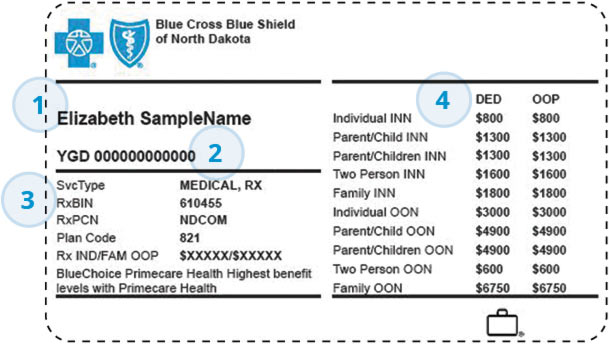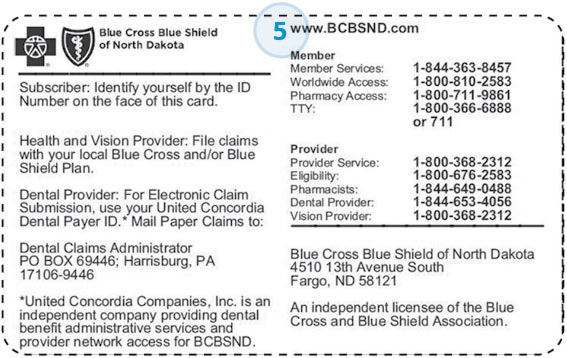Our member and provider services may be experiencing higher than normal call volumes from 12/22/25-1/9/26 due to a large number of staff being out of office. We encourage you to utilize alternative forms of communication including secured messaging through online Member Services and Availity Essentials Provider Portal.
High call volumes
Member and Provider Services Representatives will be unavailable Thursday, Jan. 1, due to the holiday. We are unable to accept walk-ins on Friday, Jan. 2., due to short staffing.
Get familiar with your BCBSND Member ID card

A passport allows you entry into another country. Your driver’s license allows you entry onto public roadways. Likewise, your insurance card allows you access to health care providers.
Your card serves two purposes:
1. Provides proof you have insurance
2. Tells you how much you’ll pay for care
Insurance cards look different for different plans, but they all have the same type of information. Getting more familiar with the acronyms and numbers will help you better understand your benefits and make it easier when you visit a care provider.
Front of card


1
The only name listed on the printed card is the primary insurance holder. Covered spouses and other dependents can go to the online portal to find a digital card with their names.
2
Your unique member number. It’s like an account number.
3
Depending upon your plan type, this section may include:
Svc Type—types of services associated with this card. If you have dental and vision coverage, you’ll receive a separate card to use for those services.
RxBin and RxPCN—tells the pharmacist how to bill your prescriptions.
Plan Code—more information that helps a provider know where to bill your services.
Office Visit Copay and ER Visit Copay—the amount you owe when you receive care at these facilities.
4
Information about the cost-sharing amounts associated with your network and family type. Acronyms you might see in this area include:
Cost sharing terms
DED—If your plan has a deductible, this is the amount you owe for health care services before your insurance begins to pay.
OOP—the maximum amount you pay out of pocket in a calendar year, before your health insurance begins to pay 100% of the allowed amounts.
Network types
INN—in-network providers include all providers who accept BCBS plans.
OON—out-of-network providers include all providers who do not accept BCBS plans.
Family types
Individual
Parent/Child
Parent/Children
Two Person
Family
Back of card


5
On the back of your card is information primarily used by the providers you see. However, as a member, you’ll appreciate the member contact numbers in the upper right corner.
When you receive your card
- Review it right away. If you spot any errors, call the Member Services number on the back of your card.
- Treat it like a driver’s license and keep it safely in your wallet.
- You may receive multiple cards. Take care of them all.
- If you lose your card, request a new one right away.